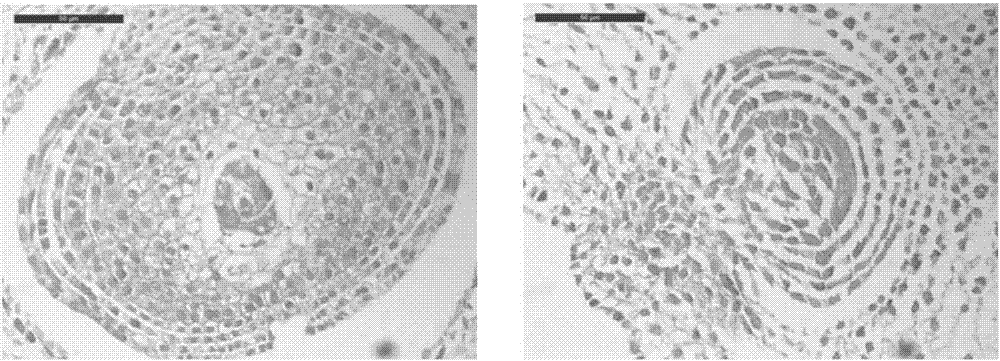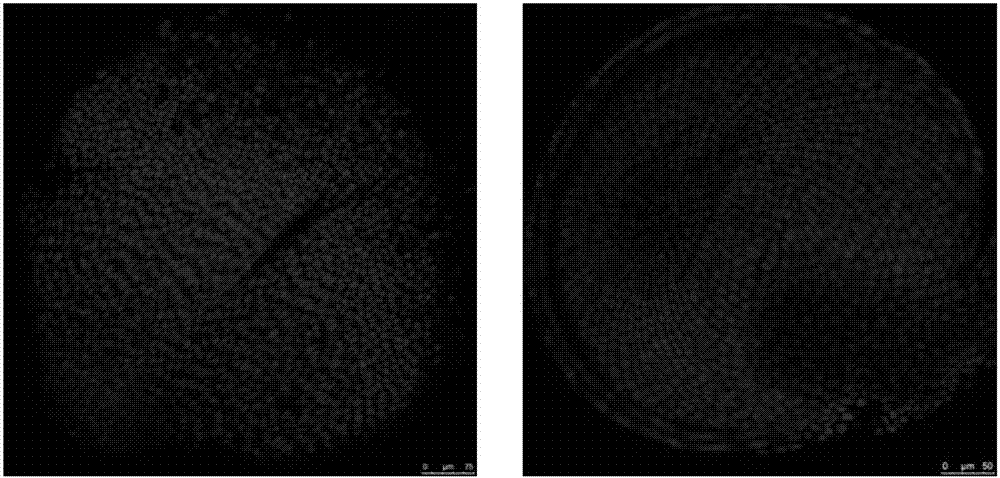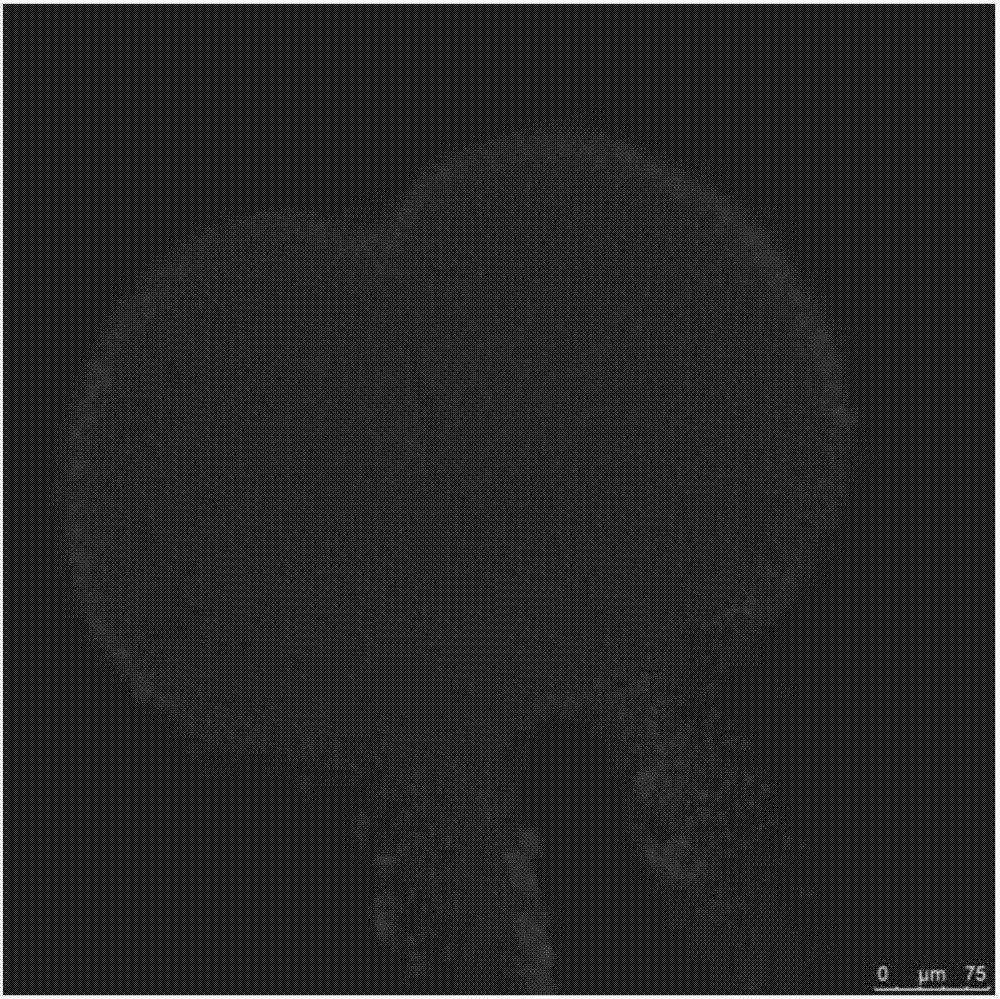Method for observing Tilletia controversa Kuhn (TCK) infected Triticum aestivum ovaries
A technology of Tilletia dwarf, wheat, applied in the field of microbiology
- Summary
- Abstract
- Description
- Claims
- Application Information
AI Technical Summary
Problems solved by technology
Method used
Image
Examples
experiment example
[0050] Experimental example, the effect comparison of the method of the present invention and the existing method
[0051] Using the method described in Wei Huixin, Gao Li, Shen Huimin, etc., 2016 "Microscopic Observation of the Infection Process of Wheat Dwarf Bacillus in Wheat", the staining and processing methods of the ovary of normal wheat plants were used to observe the obtained results. Laser confocal imaging such as image 3 shown. ( image 3 The images obtained from the wheat ovary Confocal image with an ovary diameter of 600 μm) cannot accurately and clearly display the outline and size of cells in each part of the ovary, and data statistics cannot be performed on the images.
[0052] The method of this experiment is used to observe the separation, staining and processing methods of the ovary of normal wheat plants. The obtained laser confocal imaging is as follows: Figure 4 shown. ( Figure 4 The image obtained from the wheat ovary Confocal image with an ovary...
PUM
| Property | Measurement | Unit |
|---|---|---|
| diameter | aaaaa | aaaaa |
Abstract
Description
Claims
Application Information
 Login to View More
Login to View More - R&D Engineer
- R&D Manager
- IP Professional
- Industry Leading Data Capabilities
- Powerful AI technology
- Patent DNA Extraction
Browse by: Latest US Patents, China's latest patents, Technical Efficacy Thesaurus, Application Domain, Technology Topic, Popular Technical Reports.
© 2024 PatSnap. All rights reserved.Legal|Privacy policy|Modern Slavery Act Transparency Statement|Sitemap|About US| Contact US: help@patsnap.com










